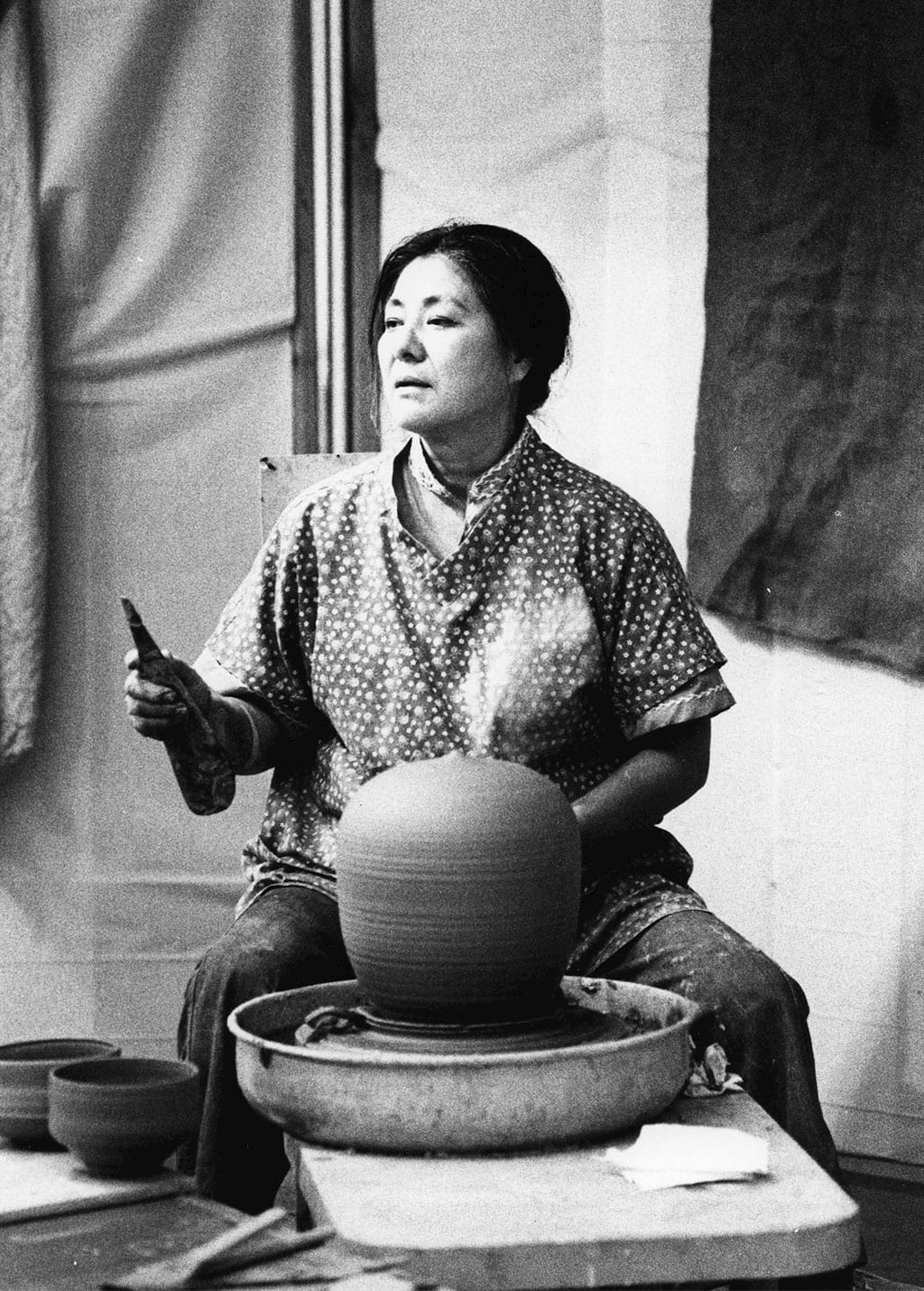loading...
Toshiko Takaezu
Toshiko Takaezu (June 17, 1922 – March 9, 2011) is a ceramicist and painter who was known for her simplistic closed form vessels, subtle brush work, and her series of Moonpots. Her work stems from her cultural Japanese heritage and her studies in Zen Buddhism. Takaezu has amassed a wide array of pieces in her ceramic career. Her diverse education, both formal and informal has led her to create works that distinctly carry elements of Eastern and Western cultural influences, including Japanese tea ceremonies, nature, and the relationship between art.
Born in Pepeekeo, HI, Takaezu first began working with clay while working in a commercial ceramic studio in Honolulu in 1940. She attended the University of Hawaii (1945-47) where she studied ceramics under Claude Horan and furthered her studies at the Cranbrook Academy of Art in Bloomfield Hills, MI, studying ceramics under Maija Grotell.
Early in her career, Takaezu created functional works but eventually transitioned into creating abstract nonfunctional pieces. She mainly worked on the potter’s wheel but at times would hand build her pieces. Using stoneware or porcelain, her works varied in size, shape, and color, with her most well known works being a closed vessel form with a small bottled, almost nipple-like, neck that would range in size and consist of her subtle and painterly glazing techniques.
Later in her career, Takaezu began teaching at several institutions including Cranbrook Academy of Art (1954-56), University of Wisconsin (1954-55), the Cleveland Institute of Art (1955-64), and Princeton University (1967-92). During 1974, she opened up her own studio in Quakertown, NJ where she began mentoring artists through apprenticeships. Throughout her teaching career, Takaezu nurtured her students and emphasized the importance of self-discovery as an artist. She retired in 1992 but remained a studio artist until her death on March 9th, 2011.

